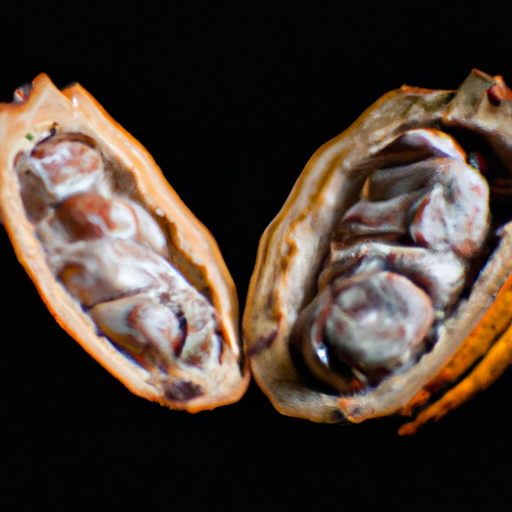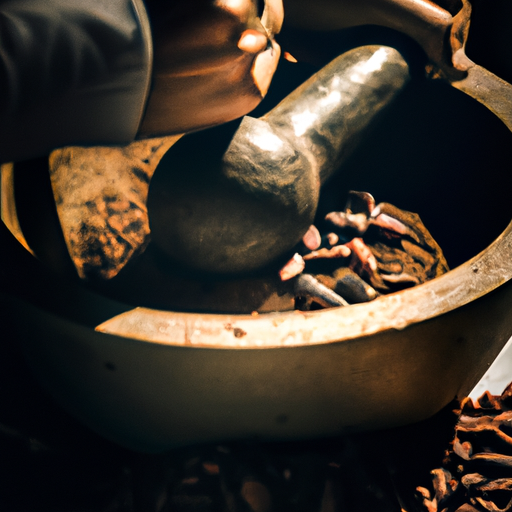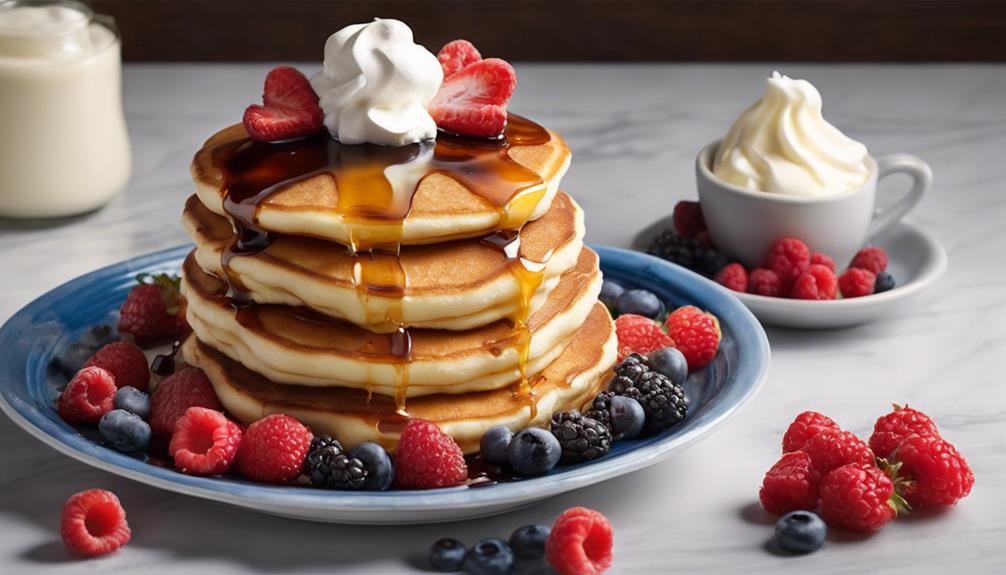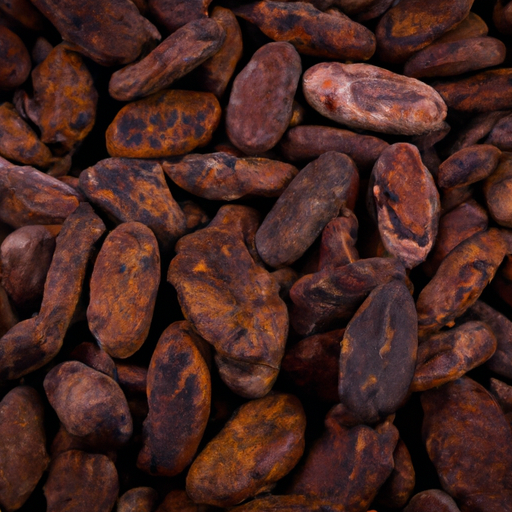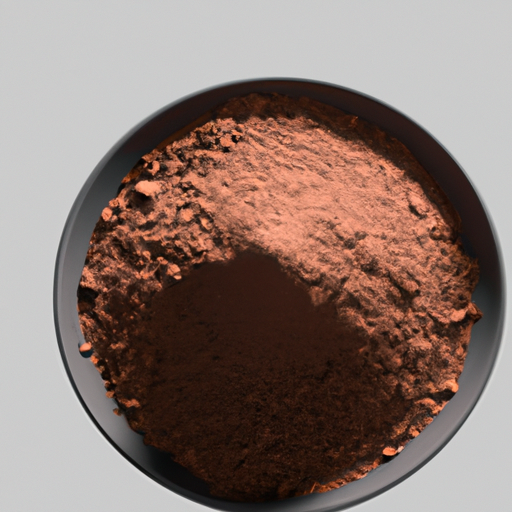I understand your skepticism. Roasting cacao nibs may not seem necessary at first glance. However, let me assure you that the process of roasting raw cacao nibs leads to a remarkable transformation. The intense and complex flavors that develop will captivate your senses in a way that is truly enchanting. Believe me, once you savor the alluring scent and satisfying crunch of freshly roasted cacao nibs, you will be hooked.
In this article, I’m going to show you exactly how to roast raw cacao nibs to perfection. We’ll cover everything from understanding the basics of cacao nibs to selecting the highest quality ones.
I’ll guide you through the preheating process, preparing the nibs, and the various roasting techniques you can use.
We’ll also discuss the roasting process itself and how to cool and store your delectable creations. And of course, I’ll share some mouthwatering ways to use your roasted cacao nibs in recipes that will make you the envy of all your friends.
So, let’s get started on this delicious adventure together!
Key Takeaways
- Adjust temperature and time based on oven’s performance for desired results
- Properly cool roasted nibs before transferring them to an airtight container for storage
- Roasted cacao nibs can be used in various recipes and dishes
- Experimentation is key to discovering favorite roasted nib creations
Understand the Basics of Cacao Nibs
To fully enjoy the roasting process, it’s important to understand the basics of cacao nibs. These little gems are the purest form of chocolate, made from crushed and roasted cacao beans. They have a rich, intense flavor and offer numerous health benefits. Cacao nibs are packed with antioxidants, fiber, and minerals like magnesium and iron.
It’s important to differentiate between cacao nibs and cocoa powder. While both come from cacao beans, cocoa powder has been processed at high temperatures, which diminishes some of its nutritional value. On the other hand, cacao nibs retain their natural goodness, making them a healthier choice.
Now that you understand the health benefits and differences, let’s move on to selecting high-quality cacao nibs.
Select High-Quality Cacao Nibs
When it comes to buying cacao nibs, I always make sure to do my research and find a reputable source. I look for places that specialize in high-quality cacao beans and have a good reputation among chocolate enthusiasts.
Additionally, I pay attention to the origin of the cacao beans, as different regions can offer unique flavors and qualities.
Overall, selecting the best quality cacao nibs is crucial for achieving the desired taste and aroma in my chocolate creations.
Where to buy cacao nibs
You can easily find cacao nibs at specialty grocery stores or online retailers. Here are some buying options to consider:
- Organic cacao nibs: These are free from pesticides and other harmful chemicals, ensuring a healthier option for you.
- Fair trade cacao nibs: By choosing fair trade products, you support farmers and ensure they receive fair wages for their hard work.
- Single-origin cacao nibs: These come from a specific region, showcasing the unique flavors and characteristics of that area.
- Raw cacao nibs: These are minimally processed, retaining more nutrients and antioxidants compared to roasted nibs.
Buying cacao nibs gives you the opportunity to enjoy their numerous benefits, such as being rich in antioxidants, fiber, and minerals.
Now that you know where to buy them, let’s explore how to choose the best quality for roasting.
How to choose the best quality
When choosing cacao nibs, consider opting for those that boast distinct flavors from a specific region. This can ensure the highest quality and a taste that your taste buds will thank you for.
Another important factor to consider is whether the cacao nibs are organic. Choosing organic cacao nibs means that no harmful pesticides or chemicals were used during cultivation, resulting in a purer and healthier product. Organic cacao nibs also tend to have a richer and more intense flavor profile compared to non-organic varieties.
In addition to considering the quality and organic nature of the cacao nibs, it is also beneficial to choose raw cacao nibs. Raw cacao nibs offer numerous health benefits as they are packed with antioxidants, minerals, and vitamins. These can support heart health, improve mood, and boost energy levels. Incorporating raw cacao nibs into your diet can also promote better digestion and enhance cognitive function.
By choosing the best quality cacao nibs, you’ll unlock a world of flavors and reap the many benefits they have to offer. Now, let’s move on to the next step and preheat your oven.
Preheat Your Oven
To achieve a rich and irresistible flavor, start by preheating your oven. This step is crucial in ensuring that your cacao nibs roast evenly and develop their full potential. Set your oven to 325 degrees Fahrenheit (162 degrees Celsius) and allow it to preheat for about 10 minutes. This temperature is ideal for roasting cacao nibs as it allows them to release their natural oils and develop a deep, complex flavor. While there are alternative methods for roasting cacao nibs, such as using a stovetop or a toaster oven, I find that using a conventional oven provides the best results. Once your oven is preheated, it’s time to move on to the next step: preparing the cacao nibs for roasting.
Prepare the Cacao Nibs
To prepare the cacao nibs, I first sort and clean them to ensure they are free from any husks or debris. This step is crucial in achieving a smooth and refined final product.
Next, I meticulously remove any remaining husks or debris, ensuring that only the purest nibs are used for roasting.
Sort and clean the nibs
After excavating the raw cacao nibs from their hiding place, it’s time to embark on the noble quest of sorting and cleaning these precious morsels. To ensure the highest quality, it’s crucial to employ proper cleaning techniques and consider storage options for the nibs. Here are four important steps to follow:
- Remove any large debris such as twigs or leaves to prevent contamination.
- Rinse the nibs under cool running water to remove any dirt or dust particles.
- Gently pat dry the nibs using a clean kitchen towel or paper towels.
- Store the cleaned nibs in an airtight container in a cool, dry place to maintain their freshness and flavor.
Once the nibs are sorted and cleaned, it’s time to move on to the next step of removing any husks or debris. This ensures that only the purest and most flavorful cacao nibs are ready for roasting.
Removing any husks or debris
After sorting and cleaning the cacao nibs, the next step is to remove any remaining husks or debris. This is a crucial step in the process as it ensures that the roasted cacao nibs are of the highest quality and free from any unwanted materials.
Removing the husks and debris helps to enhance the flavor and texture of the final product. To achieve this, there are several techniques that can be employed.
One effective method is to gently blow on the nibs to blow away any loose husks or debris. Another technique is to use a fine mesh sieve to sift the nibs, separating the husks and debris from the clean nibs.
By using these techniques, you can ensure that your cacao nibs are clean and ready for the next step: roasting.
Roasting Techniques
First, you’ll want to preheat your oven to the perfect temperature for roasting those raw cacao nibs. Set the temperature to 300°F (150°C) to achieve the ideal balance between bringing out the flavors and preserving the nutritional value of the nibs.
Now, let’s dive into the techniques for roasting.
-
Slow Roasting: This method involves spreading the cacao nibs evenly on a baking sheet and roasting them for 15-20 minutes. This gentle roasting technique allows the nibs to develop a rich, complex flavor while retaining their natural crunchiness.
-
High Heat Roasting: If you prefer a more intense flavor, you can opt for high heat roasting. Preheat your oven to 375°F (190°C) and roast the nibs for 8-10 minutes. This method results in a bolder taste and a slightly darker color.
-
Stirring Technique: To ensure even roasting, remember to stir the nibs halfway through the roasting time.
Now that you have mastered the roasting techniques, let’s move on to the next section where we will explore the roasting process in more detail.
Roasting Process
Get ready to experience a mind-blowing transformation as you unleash the power of the oven on those delectable cacao nibs!
The roasting process is a crucial step in bringing out the rich flavors of the raw cacao nibs. To achieve the perfect roast, it is important to pay attention to the roasting time and temperature control.
Generally, roasting cacao nibs takes around 10-15 minutes at a temperature of 300°F (150°C). However, it’s essential to keep a close eye on the nibs as they can quickly go from perfectly roasted to burnt.
Adjusting the temperature and time based on your oven’s performance is key to achieving the desired results.
Once roasted to perfection, we can move on to the next step of cooling and storing the roasted nibs, ensuring their freshness and preserving their amazing flavors.
Cool and Store the Roasted Nibs
After the roasting process, it’s important to properly cool and store the roasted cacao nibs to ensure their freshness and flavor.
To cool the nibs, spread them out on a baking sheet or cooling rack and let them sit at room temperature for about 30 minutes. This allows the nibs to cool down completely and prevents them from sweating or becoming sticky.
Once cooled, transfer the roasted nibs into an airtight container, such as a glass jar or a resealable bag. Store them in a cool, dry place away from direct sunlight and any strong odors. This will help preserve the roasted nibs and maintain their quality for longer.
Now that the roasted cacao nibs are properly cooled and stored, let’s explore some exciting ways to use them in various recipes and dishes.
Ways to Use Roasted Cacao Nibs
There are many delicious ways to incorporate these crunchy, chocolatey morsels into your culinary creations. One simple way is by sprinkling them over your morning bowl of yogurt. The roasted cacao nibs add a rich, intense flavor that pairs perfectly with the creamy texture of yogurt.
But that’s not the only way to enjoy roasted cacao nibs. You can also use them to enhance your desserts. Whether it’s cookies or brownies, the addition of roasted cacao nibs adds a delightful crunch and a burst of chocolate flavor.
Another great way to reap the benefits of adding roasted cacao nibs is by incorporating them into your smoothies. They provide a natural source of antioxidants and can give your smoothie a decadent twist.
So go ahead and experiment with recipes, finding new and exciting ways to enjoy the goodness of roasted cacao nibs in your favorite dishes.
Experiment with Recipes
Try out different recipes and let your taste buds go on a flavorful journey with the versatility of roasted cacao nibs.
There are countless recipes to try that incorporate these delicious nibs, allowing you to explore a wide range of flavor combinations.
One popular option is to add them to smoothies or oatmeal for a rich and chocolaty twist. You can also sprinkle them over yogurt or ice cream for an added crunch and burst of flavor.
For a more indulgent treat, consider incorporating them into brownie or cookie recipes for a decadent chocolate experience.
If you’re feeling adventurous, experiment with savory dishes like roasted vegetables or homemade mole sauce, where the cacao nibs can add a unique depth of flavor.
The possibilities are endless, so start experimenting and discover your favorite roasted cacao nib creations!
Frequently Asked Questions
How long do roasted cacao nibs stay fresh?
Roasted cacao nibs, oh how they enchant the taste buds! But alas, their freshness is fleeting. Shelf life depends on storage methods. Properly stored, they can last for up to a year.
Can I use a microwave instead of an oven to roast cacao nibs?
Yes, you can use a microwave as an alternative to an oven for roasting cacao nibs. However, the roasting time will be shorter in the microwave compared to the oven.
Can I roast cacao nibs without removing the shells?
Roasting cacao nibs with shells may seem unconventional, but as the saying goes, "don’t judge a book by its cover." By keeping the shells on, you retain more nutrients and add a delightful crunch to your roasted nibs.
What is the ideal temperature to roast cacao nibs?
The ideal temperature for roasting cacao nibs depends on personal preference and desired flavor. Generally, a temperature range of 250-300°F (121-149°C) is recommended to ensure the nibs are evenly roasted and develop a rich, chocolaty taste.
Can I store roasted cacao nibs in the refrigerator?
Sure, you can store roasted cacao nibs in the refrigerator. However, to preserve their freshness and flavor, it’s best to store them in an airtight container in a cool, dark place. Alternatively, you can freeze them for long-term storage.
– Can I Roast Cacao Nibs After Eating Them Raw?
Yes, you can roast cacao nibs after eating them raw. Roasting the nibs can enhance their flavor and provide a different texture. The process involves heating the nibs at a low temperature to maintain their nutritional benefits. Experiment with different roasting times to find the perfect level of crispness.
Conclusion
In conclusion, roasting raw cacao nibs is a simple process that can elevate your culinary creations to new heights. By understanding the basics of cacao nibs and selecting high-quality ones, you can ensure a delicious outcome.
Preheating your oven and properly preparing the nibs are crucial steps to achieve the perfect roast. With various roasting techniques at your disposal, you can experiment and find the flavor profile that suits your taste.
Once roasted, cool and store the nibs for future use in airtight containers. Get creative and explore the numerous ways to incorporate these delectable roasted cacao nibs into your favorite recipes.
Delight your taste buds and indulge in the rich, chocolatey goodness that awaits you.


